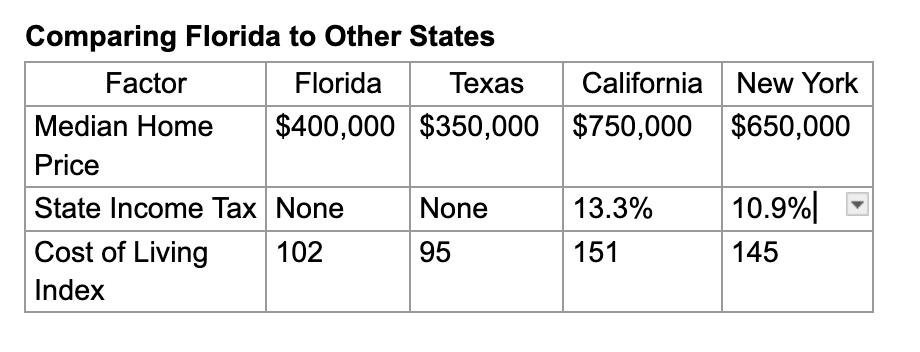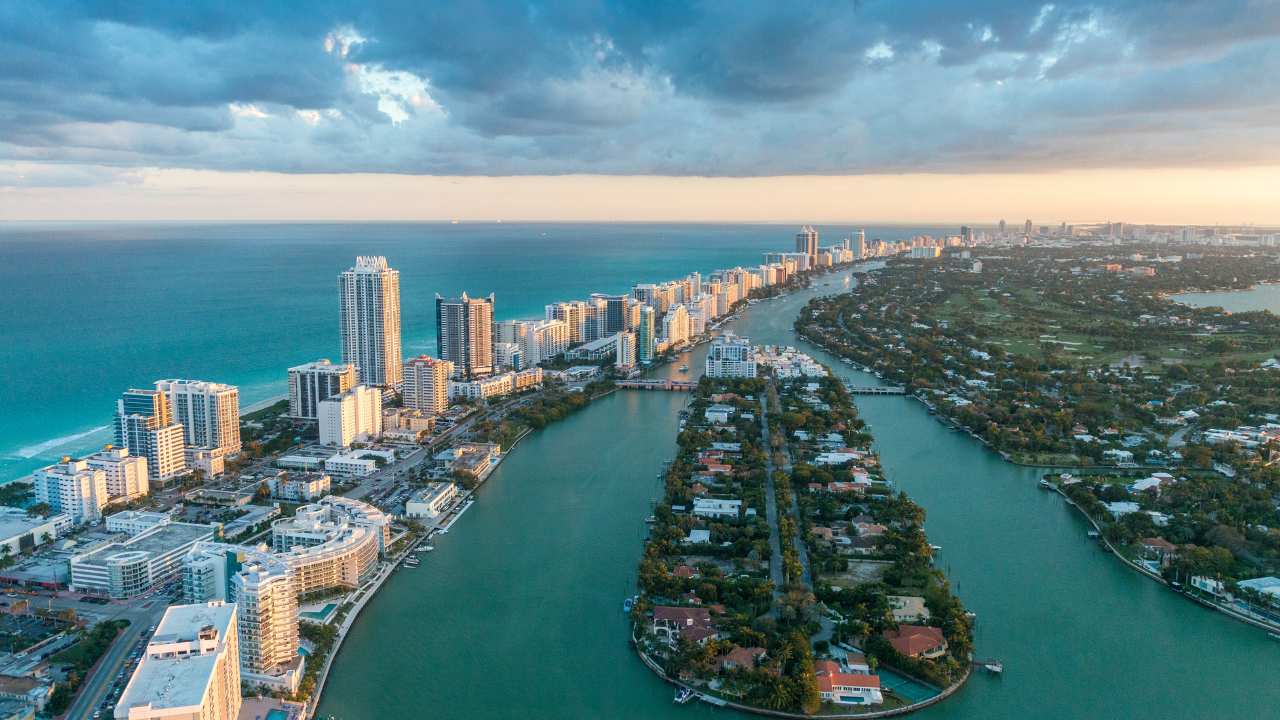Florida is known for its lack of state income tax, stunning beaches, and bustling cities. But as costs rise across the country, is the Sunshine State still a budget-friendly choice? Let’s break down the key factors that determine whether moving to Florida makes financial sense in 2025. Discover the Cost of Living in Florida.
Housing Costs in Florida
1- Rental Market & Homeownership
Housing prices in Florida have fluctuated significantly. In 2025, the median home price stands at approximately $400,000. If you’re looking to rent, here’s what you can expect for a 2-bedroom apartment in major cities:
- Miami: $2,500/month
- Orlando: $1,800/month
- Tampa: $1,900/month
While these prices may seem high, Florida is still more affordable than many other coastal states like California or New York.
2- Best Cities for Affordable Living
If affordability is a priority, consider these budget-friendly cities:
- Lakeland – Lower home prices and a slower pace of life
- Gainesville – A vibrant college town with lower costs
- Ocala – Known for its equestrian community and affordable housing

Utilities & Energy Expenses
Florida’s hot climate means air conditioning is a must, leading to higher energy costs. On average, monthly utility bills range from $150 to $250, depending on home size and usage.
Transportation Costs
1- Gas Prices & Public Transit
- Gas Prices: Expect to pay around $3.50 per gallon.
- Public Transit:
- Miami-Dade’s monthly pass: $112
- Orlando’s monthly pass: $50
2- Car Insurance Costs in Florida
Florida has some of the highest car insurance premiums in the U.S., averaging around $2,500 per year.
Healthcare Expenses
Florida offers a mix of affordable and high-end healthcare options. Health insurance costs between $350 and $700 per month, depending on coverage.
Education & Childcare Costs
- Public Schools: Free but vary in quality.
- Private Schools: Average tuition is $10,000-$15,000 per year.
- Daycare: Costs range from $700 to $1,200 per month.
Taxes in Florida
Florida has no state income tax, a major draw for residents. However, other taxes include:
- Sales Tax: 6% to 7.5%
- Property Taxes: Vary by county but generally moderate
Job Market & Salaries
Florida’s job market is thriving, particularly in:
- Tourism
- Healthcare
- Technology
The average salary is around $55,000 per year, but earnings are higher in major metro areas.

Pros and Cons of Living in Florida
Pros:
✅ No state income tax
✅ Warm weather & beautiful beaches
✅ More affordable than other coastal states
Cons:
❌ High car insurance costs
❌ Hurricane risk
❌ Overcrowding in popular cities
Conclusion
Florida remains an attractive place to live, but rising costs have made it less of a bargain than before. If you have a stable income and love the lifestyle, it can still be a great place to call home. However, those on tighter budgets may need to consider more affordable areas within the state or other states like Texas.







